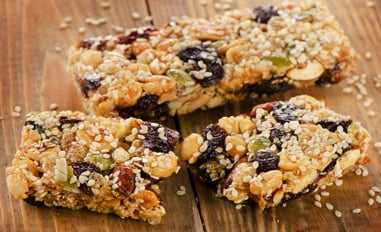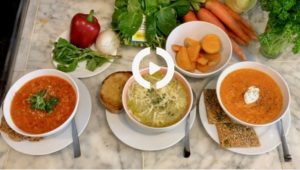For the past few years, the diet industry has warned us to steer clear of carbohydrates and now gluten. These fads are dangerous because they do not take account of individuals’ needs and can lead to deficiencies in certain important nutrients. Chief amongst these is fiber, which is commonly found in many of the grains that we are told to avoid on a low carb and gluten-free diet.
The truth is that fiber is a dieter’s best friend, and unless you have a specific illness or intolerance that prevents you from eating grains, then you would be well placed to include a good dose of fiber-rich whole grains in your daily menu. However it is not only weight loss which makes fiber a critical element of your well-being regime, and it is not only grains that contain good dietary sources of fiber.
Before unveiling all the virtues of fiber, it can be valuable to know that there are many reasons why it’s particularly valuable to someone dealing with blood sugar conditions (e.g. hypoglycemia, pre-diabetic, or diabetic.) To begin with, fiber increases the amount of necessary chewing time and thus allows the satiety mechanism to communicate a sense of fullness at the appropriate time! Fiber also slows the rate of glucose entering the bloodstream, which reduces blood sugar spikes, a very critical factor to weight loss, and overcoming insulin resistance. Fiber also plays a vital role in shifting the balance of intestinal flora to one that reduces sugar cravings! Fabulous, eh?
As a brief Fiber-101 overview, here are some basics. Fiber is categorized into insoluble or soluble. Insoluble fiber (cellulose-rich components like wheat bran and psyllium husk) plays a role in increasing the amount of your “output”, so to speak. This is helpful, of course, especially for people who are consuming mostly refined foods; the absence of it can lead to serious complications. If you are using a product to increase your fiber, here are a few things to consider: (1) start out with small amounts and slowly build, and (2) be cautious about overdoing it (which can actually inhibit your mineral absorption!) The best advice though, is this: eat a variety of real foods rich in fiber and complexity of other nutrients!
Whole foods, with a variety of soluble and insoluble fibers, will bring many more benefits than any single product can give. Soluble fibers have a beautiful effect on your digestive wellness, bringing a soothing and healing component. Soluble fiber also helps your body with its process of eliminating what is toxic in it’s natural day to day cleansing (like excess hormones, and natural end products to making the body run and heal.) Soluble fiber can also help get rid of components that are actually harmful! These facts alone are worth the exploration of bringing fiber into your life.
Soluble fibers in the form of pectins are found the skins of fruit, including citrus (yes, eat a little of the rind!) as well as onion skin (great to put into your soup or stock!) Soluble mucilaginous fibers are generally found in the seeds of plants, like grains, legumes nuts, and seeds. They are overall healing, soothing, and help food move through your body. Many barks have this property as well, like cinnamon, and other medicinally used barks like marshmallow and slippery elm.
But wait! There’s more! Lignans, compounds found in high-fiber foods, have incredibly protective properties against fungus, bacteria, and viruses. They also bind to estrogen receptors in ways that make it cancer-protective. Flax seeds are a great example of a lignan-rich healing seed. (Buy whole and blend in a coffee mill!) It’s nice to know that all whole seeds, grains, and beans have some lignans that serve our bodies amazingly well!
There are some components found in some soluble fibers that feed the good flora that in turn helps up break down food and keep a strong immune system, called inulin, and FOS or GOS. These compounds also help the good bacteria thrive in our intestines, and makes it harder for the harmful bacteria to take hold. In turn, we get a system that becomes better at actually creating energy (!), absorbing minerals, and eliminating toxins! FOS and inulin are abundant in Jerusalem artichokes, burdock root, chicory, dandelion root, leeks, onions, and asparagus.
This short introduction to the immense world fiber and its benefits will hopefully inspire your next round of whole beans, or seeds, or nuts, or veggies. Blend up some seeds and put into a hot drink, or oatmeal, or soup. Eat the skin and rind of the fruit. Experiment with what works for you! You know you’re worth it. Let the humble fiber, enrich, and nourish you!









